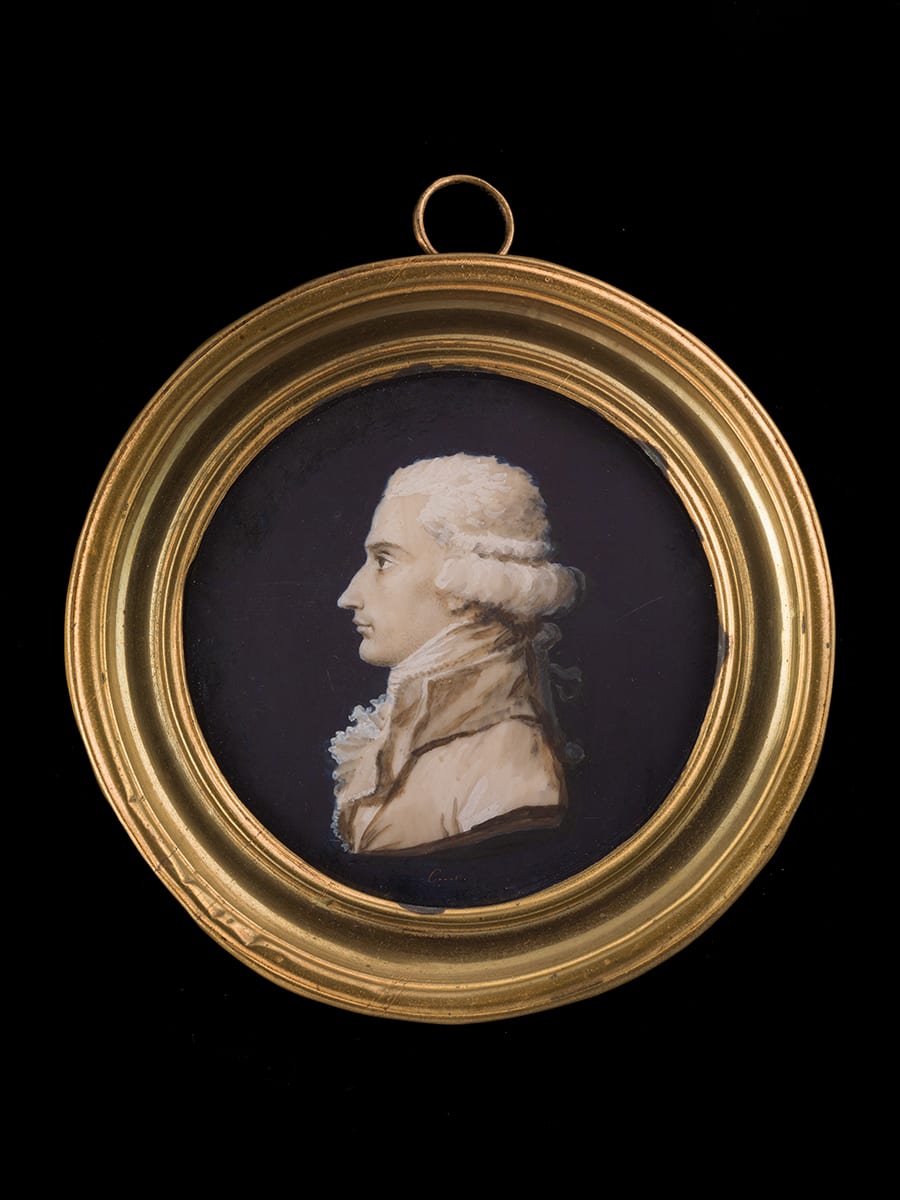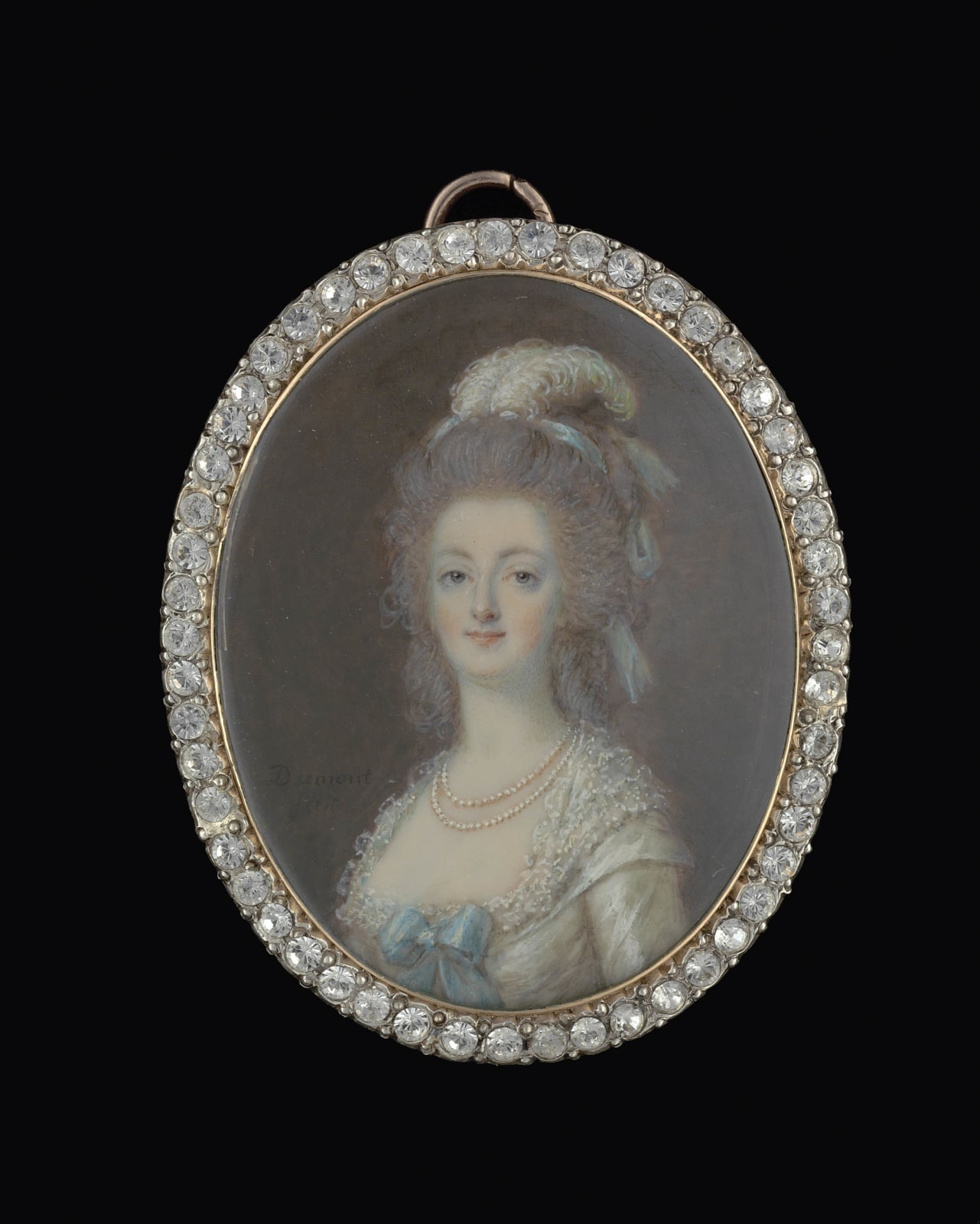Dangerous Accessories ;
a portrait miniature of the Crown Jeweller Georges-Frédéric Bapst (1756-1826)
By Emma Rutherford, Portrait Miniatures Specialist at Philip Mould & Company
With the Fabergé in London exhibition at the Victoria and Albert Museum recently closed, it feels timely to look back to another period in history of extreme opulence. Jewellery was at the centre of the scandal which ultimately led to the execution of Queen Marie Antoinette [Fig.1] via the infamous and elaborate scam now widely known as 'The Affair of the Necklace'. The comtesse (countess) de La Motte, generously called an 'adventuress' by some writers, or more accurately, a swindler by others, attempted to procure, supposedly for Queen Marie Antoinette, a valuable diamond necklace. Worth around £15million in today's money, the necklace belonged to Parisian jewellers Boehmer and Bassenge, who had already attempted to sell the piece to Louis XVI.

Francois Dumont, 'Portrait of Marie Antoinette',
The Countess de La Motte persuaded the Cardinal de Rohan, bishop of Strasbourg, to secure the necklace on behalf of Marie Antoinette, to gain favour at court. When he failed to raise funds for even the first instalment, the jewellers appealed directly to the Queen, who of course had no knowledge of de La Motte's scheme. Despite a trial in which de La Motte was found guilty and imprisoned for life, twisted and confused reports of the whole 'affair' simply added to the public perception of Marie Antoinette as morally lax and vain. Her apparent obsession with decorative jewels over the financial hardship faced by much of the population was seen as indicative of her fatuous personality and lack of compassion.
Marie Antoinette's love of jewels was first indulged via the famous Parisian firm of Bapst, of whom Georges-Frédéric Bapst, shown in this miniature by one of the Queen's favoured miniaturists, Jean Urbain Guérin, was the crown jeweller [Fig.2].
The Bapst family had been court jewellers before Marie Antoinette became queen consort, starting with Georges-Michel Bapst, who was made 'Court Goldsmith' in 1770. Since then, generation after generation, they became the jewellers to royalty and safe keepers of the crown jewels. As crown jewellers to the Bourbon family, and later the Second Empire, the 'Maison Bapst' firm was founded.[1]
The crown jeweller, Georges-Frédéric Bapst, was closely involved in several notable pieces of jewellery, some of which are still available to see today. One of the most important, the 'Maria Therese Tiara' was also at the centre of recent controversy [Fig. 3]. This diamond and emerald tiara, or diadem, was made circa 1819-20 by Bapst for Princess Marie Thérèse, Duchess of Angoulême, the only surviving child of Louis XVI and Marie Antoinette. She was also queen of France for less than half an hour (but that's another story). The tiara was worn by Empress Eugenie, and then was sold when the country auctioned off all its crown jewels in 1887. On loan to the Victoria & Albert Museum in London, for many years, the anonymous owner decided to sell it in 2002. An export ban was placed on the tiara, but the museum failed to find the funds to keep it in the UK and the Louvre managed to purchase it.
In François Gérard's magnificent portrait of King Charles X of France in his coronation robes, the real star, placed directly in front of the viewer, is his diamond crown [Fig.4]. It was the firm of 'Maison Bapst' who made this grand statement of monarchical wealth and power. In contrast to this ostentatious display, the artist Guérin has painted an understated profile portrait of the man behind these jewels. Portrayed using a very limited palette on a portrait under 3 inches high, this image of Bapst could not be more of a contrast with the highly coloured, prominent, and fantastical portraits of the royal family for whom he was working. In many ways, this portrait miniature neatly demonstrates the gulf between the ordinary people and the royal family which eventually led to Revolution.
[1] The firm became known as ‘Bapst freres’ after producing Charles X’s coronation regalia in 1824 and later ‘Bapst et Falize’ was founded in 1879 by representatives of the two famous jeweller families.








